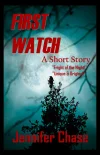With all of the technology and scientific breakthroughs implemented today, forensic science works industriously with new ways to help identify pieces of crime scene evidence, victims, and suspects in order to solve cases.
Biometric data is the digital or analog representation of the physical attributes used to uniquely identify all types of characteristics in humans (ultimately identifying a specific human), which includes many types of forensic evidence.
In November of 2011, The National Institute of Standards and Technology (NIST) published a revised biometric standard that improves the type and amount of information that forensic scientists can share across international networks. This would further assist in the identification of a victim(s) and/or solve crime(s).
Brad Wing, a NIST Biometrics Standard Coordinator, stated, “The additions to this version of the standard represent a great leap forward. The capabilities of the system have been greatly expanded from that of matching a fingerprint, facial image or iris sample collected directly from a live person and comparing to the samples previously stored in a database.”
Here are some areas that this new standard improves:
- Exchange of DNA data. For example, DNA can be used in a criminal case for identification in a rape case, identifying victims in disasters or plan crashes, and any investigation that needs to compare a sample from a suspect to a particular case.
- Improved markers for latent prints: fingerprints, palm prints, and footprints.
- Share geo-positioning coordinates of biometric sample collection. For example, photos of items found around a crime scene as well as audio and video clips.
All of these examples can be shared with scientists and law enforcement agencies across the globe.
Researchers are diligently working on new additions to the biometric data standards with voice recognition, bite marks, and dental forensics.
2012 is a new year and I’m excited to see what new forensic breakthroughs that will amaze us and solve cases.
Top photo: These examples of the new standards Extended Features Set show forensic scientists how to mark core locations (clockwise from top left) for a double loop whorl, plain whorl, central pocket loop whorl and tented arch. (Credit: NIST)
* * *





































